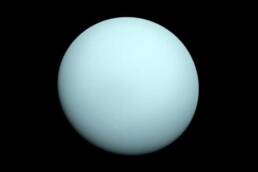Allegory of Astronomy (Urania), Francesco Cozza, 1660s
May 24 , 2019. URANIA
An anarcho-queer collective wanders in the outer space of Florence, Italy. The outlandish astronauts land on an abandoned planet and decide to squat it – this celestial body is named Urania and the settlers call themselves the Uranesse.
If you look at Earth from space, you will spot Urania where the suburban fabric of Florence gradually fades into industrial sites, highways and villages. Urania is located between a truck stopover, an illegal dump, the end of the city park infamous for drug dealing and battuage, not far from the Roma community trailer park, and just on the opposite side of the river from an economically disadvantaged 1960s social housing estate. Instead of feeling the pull of gravity towards the city centre, Urania orbits towards the margins inhabited by drug dealers, rent boys, sex workers, homeless people, migrants, ethnic minorities, the unemployed and the poor, all subjects who “live outside the reproductive and familial time as well as on the edges of logics of labour and production” (Halberstam 2005, 10).
Like any major space venture, such as Apollo 11, Urania too bears reference to a Greek deity. Urania is the goddess of “celestial” love who, according to ancient Greek poet Hesiod, was conceived without a mother from the severed genitals of Uranus. This tale of artificial reproduction and castration is the perfect origin myth for the anti-normative and anti-patriarchal divine Urania, the protectress of the Uranesse described as “the goddess of the queers, lesbians, sluts, unicorns, perverts and those individuals free from heteronormativity”(Urania Queer Squat 2019).
The myth of Urania was an inspiration for writer and pioneer of gay rights Karl Heinrich, who in the 1860s coined the term “Uranian” to describe people who embody a “third sex”, who “loved differently”. The Uranesse are Uranian in their quest for love and kinship beyond romance and the couple, for alternative methods of alliance “opposed to the hegemony of dominant culture, but also the mainstreaming of gay and lesbian culture”(Halberstam 2005, 161).
We have a conflagration of names here: the astronomy muse, represented in traditional iconography balancing on a blue globe, is also called Urania. Similarly to the wavering muse, the Uranesse are unsteady over political stances that are difficult to reconcile. Between an anarchist movement blaming queer body politics for obstructing the “real” work of activism, and an often apolitical LGBTQI community morphing into the heterosexual model, Urania prefers to endlessly wobble.
Urania does not only exist in myth and literature, it exists in space. In this vacant building in the outskirts of Florence the Uranesse could finally “establish [their] presence, express [their] desires freely, subtract a small yet enormous space from the forces of State, patriarchy and hetero-sexism”(Urania Queer Squat 2019). They managed to bring water and electricity in it, and arranged the space for collective forms of living. Despite the absence of basic appliances such as a proper chocolate fountain, the villa can host concerts, workshops on queer culture, cinema club, karaoke nights, theatre performances, cut and dye sessions, a zine library and a free shop. Urania is built and maintained collectively, by its occupants and those who sympathize with the project. Major renovation works are carried out within a framework that includes moments of discursive and practical knowledge exchange, encompassing both welding workshops and transfeminist theory readings.
Not everyone is up for an expedition on Urania, so the Uranesse often venture into the nearby neighbourhood and try to create connections with the local people through the distribution of pamphlets or open-air cinema in the square. Urania has become a space for interclass and intergenerational contact, where local teenagers can smoke pot and talk gender, migrants can stop by and maybe charge their phones, those who need it can find a temporary accommodation.
Urania does not only exist in space, it also exists in outer space. Its ruling planet is Uranus, known in astrology as the planet of freedom, revolution, change, and radical ideas. Uranus is also the coldest planet of the Solar System, located 2,871 billion km from the Sun, in the cosmic hinterland. Just like Uranus, Urania too is far from the gleaming centre of attention. Its peripheral position is, in certain respects, favourable: it remains a remote and unknown territory where anything and everything could happen, including diamond rains.
Narratives of queer identity are often linked to a voluntary migration from the narrow-minded and oppressive periphery to the city as a space of possibilities, encounters and transgression. Urania, instead, followed the opposite trajectory of a body in space. For several years, before settling on Urania, the collective was active in the city centre of Florence, providing an alternative scenario within a city centre subject to an incessant process of cleansing, where the only tolerated “queer spaces” are metronormative spots of consumption catering gay white male sexual communities. So, when the opportunity of squatting a space outside the municipality arose, the Uranesse made the leap out of Florence’s suffocating atmosphere. Unfortunately, even in the furthest part of the city’s exosphere, Urania remains constantly under control and threat of eviction from the forces of police and privatisation.
Urania is an experiment in queer anti-urbanism, it challenges the assertion that queer identity is inseparable from the urban. While the city was the setting for confronting gentrification and challenging repression, the rural offers the chance to experiment with ways of living and creating culture under different premises. Yet it doesn’t have much to do with the romantic idea of a commune enjoying peaceful and free life in the countryside. The rural context where it is located is neither wholesome, nor pretty, nor idyllic. For many Uranesse the countryside generally is not a retreat, but a workplace: when we meet for a few questions in advance of the writing of this article, everyone is about to leave to spend the month of September working in France for the harvest. They considered growing vegetables on Urania, but the soil is likely to be contaminated by the nearby illegal dump, so gardening is not recommended. The Uranesse are not queer rural farmers, they are aliens trying to have the best time on the methane rich surface of Urania.
January 7, 2020. HYPERURANIA
The 2019 Nobel prize in physics was awarded to the Swiss astronomers Michel Mayor and Didier Queloz for their discovery of the first planet beyond our solar system. (Devlin, Hannah/ Sample, Ian 2019) Strange new worlds are still being discovered, which challenge our preconceived ideas about planetary systems and prompt scientists to revise their theories. The Uranesse made one small step on Urania, showing that there might be alternative ways of life beyond existing power structures in the queer outer space. Urania is not shaped through terraforming, the rather unimaginative process of transforming a planet in order to resemble Earth, on the contrary it completely refuses to acquiesce with terrestrial models. Especially at this moment of ecological and social crisis, inhabiting Earth as if it was a different planet, instead of inhabiting new planets as if they were Earth, should be taken into serious consideration.
After having been warned of an imminent eviction, the Uranesse decided to elegantly depart from Urania in their own terms. Started as a TAZ (Temporary Autonomous Zone), a few days long experiment in transfeminism and anarchism, Urania developed over the course of seven months and brought together diverse individuals, groups and experiences. Unbound from its physical presence, Urania can ascend to the Hyperuranion, that world behind the celestial vault inhabited by the ideas of real things, and will make a comeback, maybe soon, on other planets.
A special thanks to Spyros from Urania Queer Squat.

Federica Buzzi
Independent curator, writer and cultural worker living in Brussels. Also known as the mastermind behind DEMIMMONDE, a platform exploring dirty matters in architecture and beyond.
